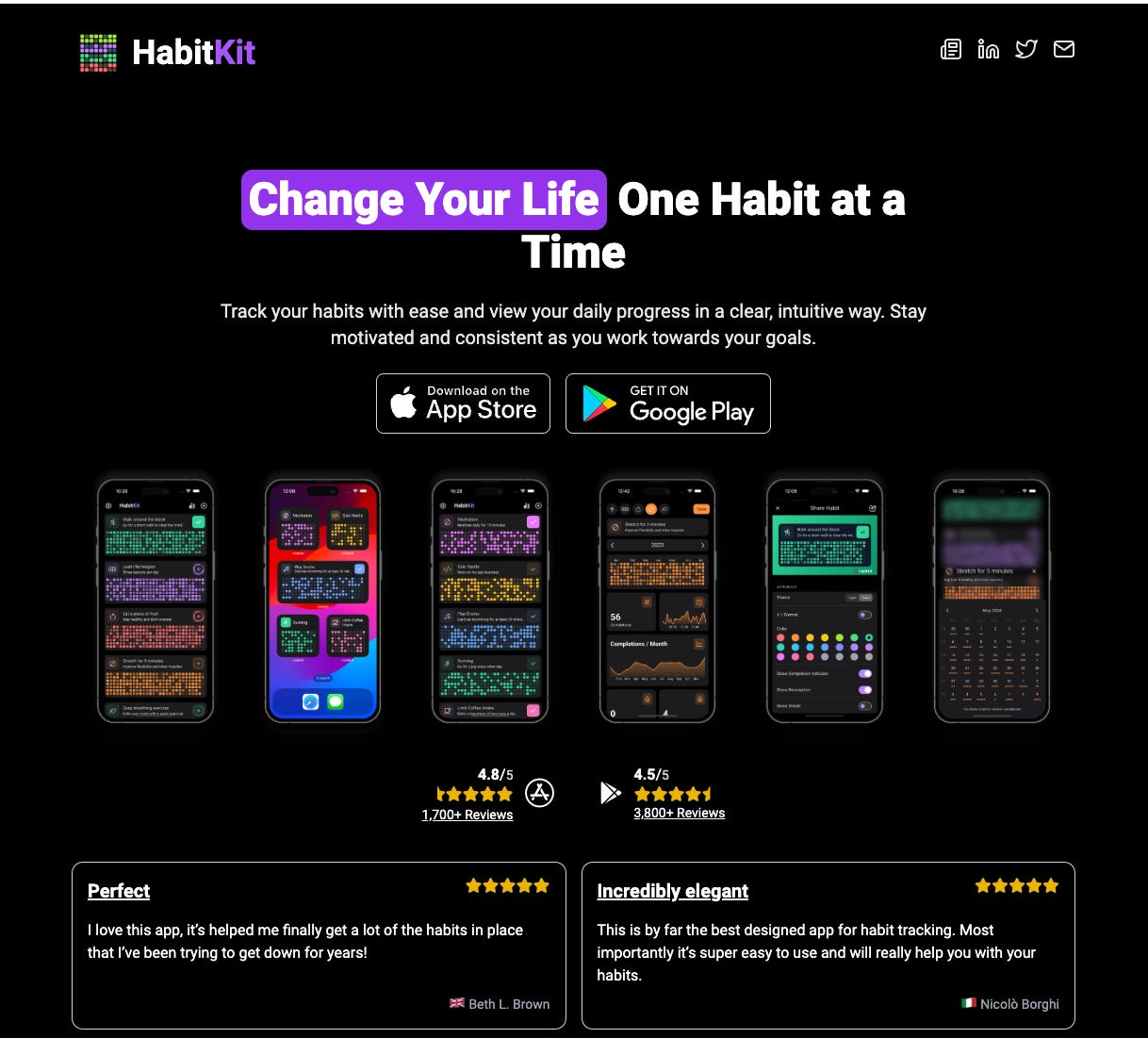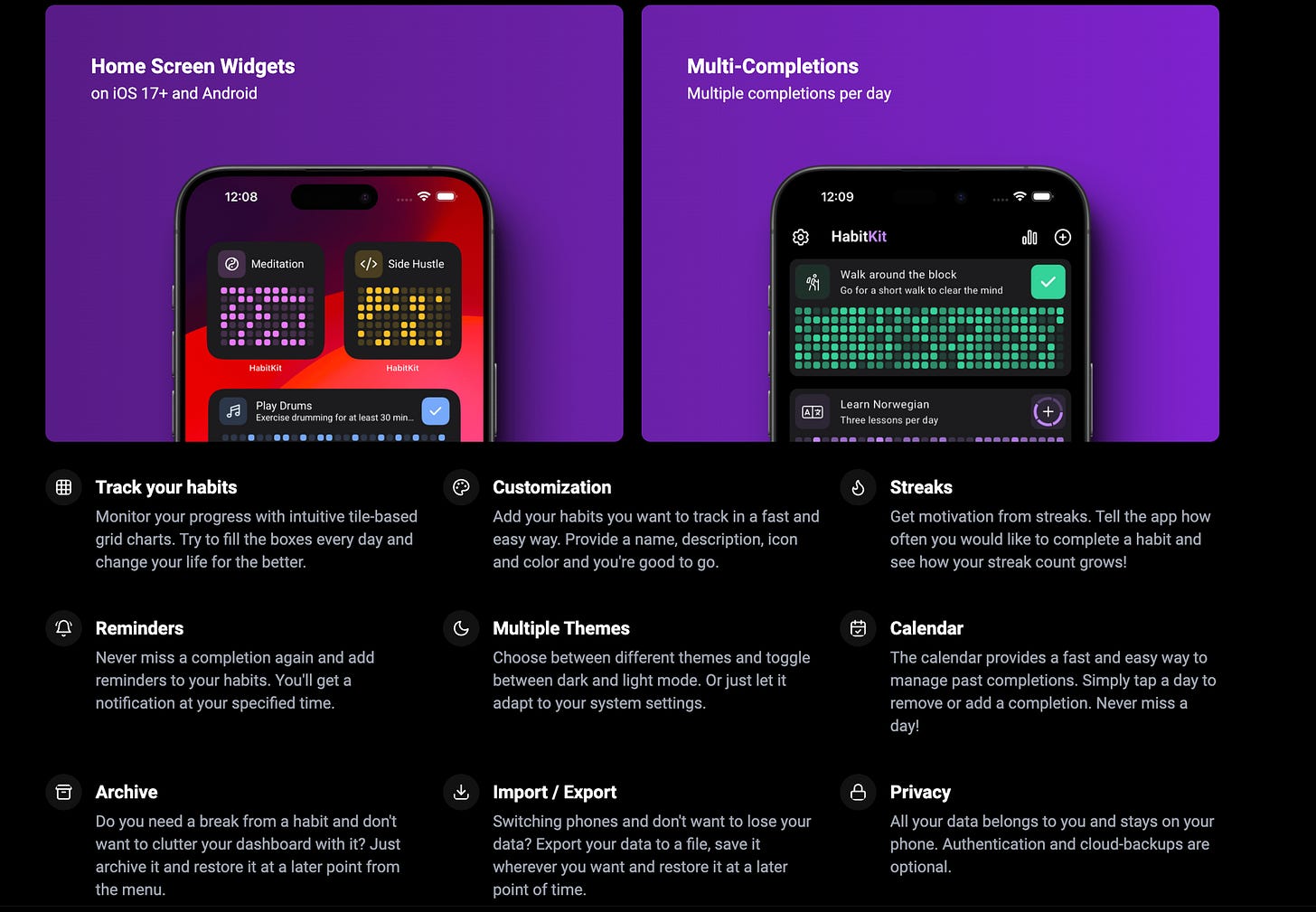$30,000 Per Month: Sebastian Röhl's Journey to Successful Indie Hacker with HabitKit
"Happy Bootstrapping" Volume #31
After two years, Sebastian from HabitKit is back at Happy Bootstrapping – and what a development he’s experienced, wow!
When we first spoke in 2022, he had $5,000 MRR (Monthly Recurring Revenue) and was working part-time again in his former job. Today, he’s a full-time indie hacker and generates over $30,000 monthly revenue during peak times with his habit-tracking app.
This is a summary of Episode 143 of the “Happy Bootstrapping” Podcast (German).
The Founding Story: Second Time’s the Charm
Sebastian’s path wasn’t straightforward. After his first attempt at self-employment, he briefly returned to his old job part-time. But the app revenues continued to grow steadily. In November 2023, he made the decision to quit again – this time for good. “It was already an unspoken reality that if I were to go back to employment now, it certainly wouldn’t be at that company anymore,” Sebastian reflects on the situation.
He hadn’t really experienced the first major winter surge in December and January after the November 2022 release. But during his first complete winter as a full-time developer, business exploded: Up to $30,000 monthly revenue in December and January, which halved to about $15,000 in summer but still provided a solid foundation.
The Product: GitHub Graph Meets Habit Tracking
HabitKit’s core feature differs from competitor apps like Streaks through its visual representation. Instead of just showing a number for streak days, Sebastian offers a calendar view in tile format – similar to the GitHub Contribution Graph, but with icons and colors. “I wanted a slightly bigger picture of my consistency,” he explains his motivation.
Technically, Sebastian uses Flutter as a cross-platform framework to serve both iOS and Android with one codebase. However, he had to invest additional work for native features like interactive homescreen widgets. The app currently has over half a million downloads on Google Play.
Business Model: Subscriptions and Lifetime Deals
HabitKit offers two monetization models: subscriptions for $2 per month on iOS ($1 on Android) and a lifetime deal for $32. Interestingly, the higher iOS pricing works well, while a price test on Android failed. The app has now reached a monthly ARR that fluctuates between $15,000 in summer and up to $30,000 during winter months.
A special milestone came in December 2024 with a mention in a YouTube video by the channel “The Studio.” “I was sitting on the couch in mid-December and wondered why my phone kept buzzing.”
The 30-second segment in a video with over one million views catapulted the app to a new level and sustainably improved its ranking in the US App Store.
Marketing: App Store Optimization as the Key Discipline
Sebastian’s marketing strategy is surprisingly simple and focused: App Store Optimization (ASO).
“My growth, my revenue is currently completely based on the ranking in the App Store and Google Play.”
He only tests paid ads sporadically with small amounts, without seeing major success.
Additionally, he uses Build in Public on Twitter/X (18,000 followers), LinkedIn (5,000 followers), and his newsletter “Building an Indie App Business” with now 1,000 subscribers on Substack:
These channels primarily serve for community exchange and as a motivation tool. Podcast appearances, such as at Starter Story, mostly came through external requests.
A Times Square billboard placement through a RevenueCat raffle surprisingly brought no measurable downloads – but made for a cool story.
Challenges: Lifetime Deals and Seasonality
The biggest technical challenge paradoxically lies in a feature many users want: cross-device sync. Since HabitKit currently works completely locally, Sebastian would need to build a backend infrastructure. The problem: lifetime deal buyers might react negatively to a paid cloud sync function, while ongoing server costs would arise.
The business’s seasonality is now predictable: every winter, revenues double as many people make resolutions in January. “As long as the base level increases year over year, I don’t worry about it anymore,” Sebastian shows his confidence.
Another challenge is app clones. Since he stopped publicly sharing his numbers, the number of imitators hasn’t noticeably decreased. “You really need to have staying power in the App Store,” he comments calmly.
What I Learned in the Interview
Sebastian’s openness gave me several important insights: The value of a clear visual USP (the GitHub-like calendar view) cannot be underestimated. Additionally, his example shows that organic growth through ASO can be more sustainable than paid campaigns – even if it’s slower.
His balance between HabitKit and the new Pomodoro side project shows how important new creative challenges are for motivation.
Sebastian’s Learnings
Never change a winning system: No more experimenting with the App Store Optimization strategy as long as rankings are good
Seasonality as an opportunity: Leverage the winter months, but view the summer base level as security
Build in Public as motivation: The newsletter and social media help stay on track – “If I don’t do anything today, I have nothing to post”
The right timing for side projects: After two years of intensive work on HabitKit, it was time for technical variety with native iOS development
Make product decisions yourself: Only implement features you’re excited about, even if many users demand something else
The value of authenticity: Organic mentions (like the Studio video) deliver more than paid placements
Happy Bootstrapping is a German podcast where I interview bootstrapped founders, indie hackers, and solopreneurs about their startup journeys.
Over the years, I’ve connected with many successful entrepreneurs who have built e-commerce shops, SaaS platforms, mobile apps, content businesses, or hybrid models.
Furthermore I am a bootstrapper myself and growing my DevOps-as-a-Sercice and Web Operations Company “We Manage”.




